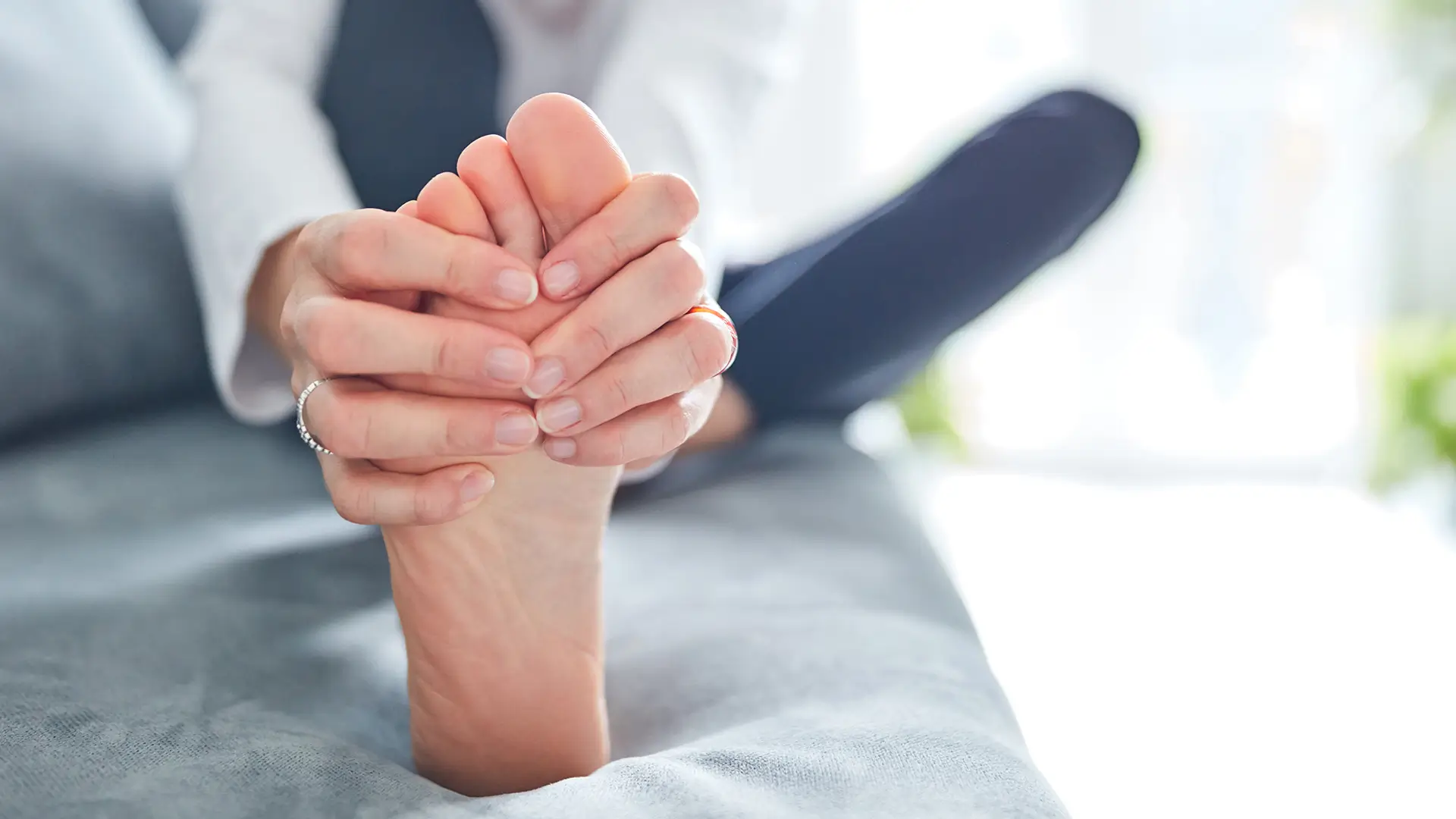The big toe may seem small, but it actually plays a big role in how we move through the world. As one of the most important joints in the body, the big toe–or the metatarsophalangeal (MTP) joint, specifically–allows us to walk, maintain balance, and propel ourselves forward during walking, running, jumping, dancing, or playing sports.
Believe it or not, big toe pain can result from a number of common conditions or mechanical issues, each capable of interfering with this joint’s vital role in movement. Whether from inflammation, injury, or nerve involvement, pain in the big toe joint can significantly limit mobility and quality of life, making it even more important to seek care promptly if pain arises.
Common Causes of Big Toe Pain
Big toe pain can be surprisingly disruptive, making everyday movements uncomfortable or even unbearable. This type of pain can stem from a variety of underlying causes—from injuries to inflammatory conditions—and often worsens over time if left unaddressed.
Some of the most common causes of big toe pain include:
- Gout: A form of inflammatory arthritis caused by a buildup of uric acid crystals in the joint, leading to sudden, intense pain and swelling.
- Bunions (Hallux Valgus): A bony bump that forms at the base of the big toe, often causing pain, stiffness, and difficulty with footwear.
- Turf Toe (Sprain of the Big Toe Joint): A ligament sprain resulting from hyperextension of the big toe, commonly seen in athletes.
- Fractures and Injuries: Trauma to the toe, such as stubbing, dropping something heavy, or repetitive stress, can lead to fractures or bruising that causes pain.
- Nerve Issues (Neuropathy or a Pinched Nerve): Nerve compression or damage can result in tingling, burning, or sharp pain in the big toe.
Symptoms to Watch For and What They May Indicate
Understanding the specific symptoms you’re experiencing can be a valuable first step in identifying the underlying cause of your big toe pain. While some symptoms may overlap, others can point more directly to certain conditions.
Here are some common symptoms to watch for and what they may indicate:
- Sudden, intense pain with redness and swelling: This could indicate gout, especially if the pain comes on at night or after consuming certain foods high in purines.
- A visible bump on the side of the toe, with gradual pain or shoe discomfort: This symptom indicates a Bunion (Hallux Valgus), which is typically associated with altered foot mechanics and tight footwear.
- Pain after bending the toe upwards during sports or running: This may indicate Turf Toe, often due to overstretching or repetitive strain of the big toe joint.
- Sharp pain following a direct injury, with bruising or swelling: This symptom may indicate the presence of a fracture or injury, especially if the pain is immediate and worsens with weight-bearing.
- Burning, tingling, or numbness in the toe: Burning, tingling, or numbness can indicate nerve issues such as neuropathy or a pinched nerve, which may also cause symptoms in other areas of the foot.
Effective Treatments for Big Toe Pain
Newer advances in regenerative medicine have brought about treatment with non surgical techniques,
such as Platelet Rich Plasma (PRP) therapy and Bone Marrow Aspirate Concentrate (BMAC). These treatments use solutions found within the body that work to heal a person when there is an injury.
PRP works by increasing vascularization and blood flow to an injured area and using chemical mediators called cytokines to recruit other healing components to the area. This encourages tissue regrowth and repair.
Bone Marrow Aspirate Concentrate, on the other hand, is obtained by drawing liquid bone marrow from the hip (iliac crest) region, which is then injected into the area of injury or pain. The BMAC solution contains adult stem cells that, when injected into the damaged area, promotes growth and repair of the damaged joint and surrounding tissues.
Finally, prolotherapy is another effective technique that involves injecting a natural irritant (often dextrose) into the joint or surrounding ligaments to trigger a mild inflammatory response, encouraging the body to repair and strengthen the area.
When to See a Pain Management Specialist for Big Toe Pain Relief
Pain in your big toe—or even whole foot pain—can impact every aspect of your life. Fortunately, with the right diagnostic guidance and treatment, you can be on your way to living pain-free.
If you’ve been struggling with big toe pain when walking, standing, or during other activities, schedule a consultation with the spine and musculoskeletal experts at the Center for Healing and Regenerative Medicine (CHARM) today. Together, we’ll find a solution that gets you back on your feet, holistically.

